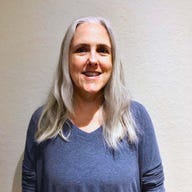How to write a standout software engineering resume


Job-seekers may be tempted to create one resume that lists all of their skills and experience and call it done. But in the competitive tech world, you'll have to tailor your software engineer resume for each position to grab eyes.
Taking the time to use keywords and terms and cut out any extraneous information can put your software engineering resume on top of the stack. Read on to learn how.
Tailor your resume to each job you apply for
Tech companies use applicant tracking software that scans resumes for keywords before they go to the hiring managers. By tailoring your resume to the job listing, you significantly increase your chances of making the first cut and getting a job interview.
Use employer job descriptions as a template for your software engineering resume. Highlight the listings' essential responsibilities and skills, and mirror the employer's language and keywords in your resume and job application. Just make sure to integrate them naturally (and don't claim skills you don't actually have).
For example, if you're interested in becoming a software engineer at Amazon, include phrases like, "X years of software development experience with Java, Python, and C#/C++."
You may have heard recommendations to hide keywords in white text on the page. Applicant tracking software converts your resume into plain-text, so those keywords won't stay hidden. Focus on highlighting relevant skills you possess rather than getting tricky with formatting.
How to format your software engineer resume
Hiring managers don't have a lot of time to spend reading resumes, so limit yours to one page. If you have many years of relevant experience, you can top out at two pages.
A font size of 11-12 should allow you to fit everything in without crowding. Present your work and educational experiences in reverse-chronological order.
Keep your resume's dsign simple and professional. At most, use a single, pleasing color besides black and white. Impress recruiters with your skills, not an eye-searing magenta background.
Use a structure that's intuitive and clean — either a one-column or two-column format. Bullet points aid readability, and white space helps your resume appear crisp and to-the-point.
A software engineering resume should include the following components:
- Header
- Summary/objective
- Work/employment experience
- Skills
- Projects
- Education
Header
Your resume header introduces potential employers to your professional identity and personal brand.
In addition to your name, email address, and phone number, include hyperlinks to your LinkedIn page, GitHub profile, website, portfolio, and anything else that showcases your applicable skills and talents.
The header doesn't just tell recruiters how to reach you, it emphasizes what you can do.
Summary/objective
The summary/objective section sits just below the header, but consider writing it last. That way, it can capture the spirit of your resume and describe how your experience and skills will bring value to the job you want.
This section should consist of just one or two sentences and include a couple of the job description's most important keywords.
Using the Amazon example, a strong summary/objective might say, "Skilled software engineer seeking a position at Amazon Financial Technology where I can grow my 5+ years of software development experience with Java, Python, and C#/C++."
Work experience
The work and employment experience section of your resume is where you can demonstrate the impacts and outcomes of your work. The goal is to show, not tell, recruiters what you can do for the company.
Don't just list job duties. Instead, help the hiring manager visualize you successfully doing the job by using the STAR method to describe prior projects and responsibilities: Situation, Task, Action, Result. Here, you can highlight how your work benefited the organization or how you worked through a problem.
Whenever possible, describe your work's impact with stats. For example:
Instead of… | Implemented bug fixes in a timely manner |
Try… | Cleared a backlog of 120 bug-fixes in my first six months on the job |
Instead of… | Updated quality control processes |
Try… | Gave quality control processes their first update in five years, reducing QC completion time by 15% |
Phrases and sentence fragments are acceptable.
If you are new to the field, visit How to become a software engineer for ways to gain experiences for your resume.
Skills
The skills section of your software engineer resume should be concise and easy to scan. Try listing relevant skills in bulleted lists. Again, only include skills applicable to the job.
For our hypothetical Amazon position, the list of your technical skills could include:
- Java
- Python
- C#
- C++
- Agile
- UNIX/Linux
- Data structures
- Service-Oriented Architecture
- Object-oriented programming
Avoid listing soft skills. A bulleted list doesn't have space for the context you'll need to prove you have an abstract skill like "self-starter," and an employer is unlikely to trust your self-assessment without that context. Save people skills for your cover letter instead.
Projects
Now that your resume has grabbed the hiring manager's attention, your projects section should showcase your passion for software engineering and include projects most applicable to the position you want. Include one-line descriptions of a few projects and link to your portfolio for more details.
In addition to work projects, you can use projects completed for classes or bootcamps, contributions to open-source projects, and your own projects.
Commonly used portfolio formats include a website, blog, LinkedIn page, or GitHub Pages. For inspiration, explore How to build a coding portfolio.
Education
The education section should list the schools you've attended, where they're located, the date you graduated, and the degrees/certificates earned. Even if you earned something other than a software engineering degree, completing higher education demonstrates dedication and critical thinking skills to employers.
Don't have to include your GPA unless the job description specifically calls for it. The exception: If you're a recent graduate with little work experience and your GPA was high, listing it may demonstrate your studiousness.
You can also include internships you completed while in school and any software engineering or coding bootcamps you've attended.
Additional sections
If you have the space and additional sections will add depth to your resume, consider including the following.
Certifications
Are you a certified software engineer? Do you hold certifications in specific programming languages or platforms? List them, especially if the job description mentions them.
Volunteering
Only include volunteer work that's relevant to the job for which you're applying. Be specific about the projects you worked on and your roles.
Languages you speak
If the job description mentions a preference for a particular language or you are applying for a position at an international company, listing the languages you speak can give you an edge.
Professional organizations you participate in
Include these if directly applicable to the position or if you've learned the people who may be supervising you belong to the same organizations.
SEE: 12 professional organizations advancing DEI values in tech
Courses you've taken
If your work or volunteer experience is lacking an element key to the job, include any courses that would help round out your skillset.
If your prior experience doesn't include a key job skill, but you've taken a course in that subject,
Hiring insights from HackerEarth's chief technology officer
Vishwastam Shukla is the chief technology officer at HackerEarth, a platform to engage and source top developers with hackathons. HackerEath enables businesses to assess, interview and upskill developers. Previously, Vishwastam was a site leader and software development manager at Amazon.
Answers have been lightly edited for length and clarity.
ZDNet: What are the top things you look for when reading through a software engineer candidate's resume?
Vishwastam Shukla: I generally look for what I call "performance spikes." These spikes could show up in many forms. For instance, it could be work experience at a great organization, an individual project with great impact, or sometimes even ivy league education for junior engineers.
These spikes tell me that the individual, when needed, can outperform their own self and show resilience against great odds.
ZDNet: What are the most common mistakes you see on people's resumes that cost them moving to the interview stage, and what can they do differently?
VS: Long, verbose resumes are immediate put-offs. You can put in your life's work in 1.5 to two pages max. Short, crisp resumes are the best.
Instead of listing 20 different skills that you might have picked up over time, talk about them within the context of your work. It might help to focus on your experience that is most relevant to the role being applied for.
ZDNet: When reading through a candidate's software engineering resume, what can make you instantly want to set up an interview with them?
VS: I will want to set up an interview with a candidate when they're describing their prior experience and the impact or complexity is absolutely unambiguous.
This article was reviewed by Sierra Gawlowski, PE
Sierra Gawlowski, PE, earned her BS in civil engineering and is a licensed professional engineer in the state of Washington. She has worked for a private engineering consulting firm as well as for public agencies. Sierra enjoys mentoring engineering students and junior staff. She also leads a project team for Engineers Without Borders and currently sits on the board of directors for Kilowatts for Humanity.
Gawlowski is a paid member of the Red Ventures Education Integrity Network.
Last reviewed May 23, 2022.